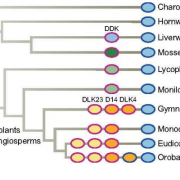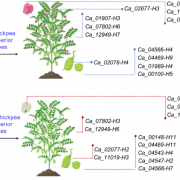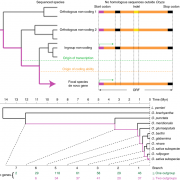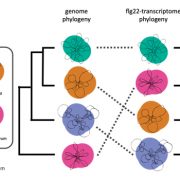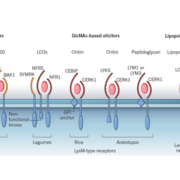Genome assemblies of maize lines Mo17 and W22: Extensive intraspecific variation, and resource for functional biology (Nature Genetics)
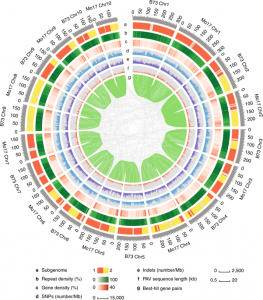 The maize genome is largely composed of transposable elements, which is one reason maize has been such a powerful genetic model. However, these transposons also mean that there is a great deal of genetic variability between inbred lines, which can contribute to heterosis (hybrid vigor). In a pair of papers, Sun et al. report a de novo genome assembly of Mo17, which is widely used as a male parent in hybrid production, and Springer et al. report the assembly of a reference genome for W22, which is widely used for transposon-based gene mapping. These new genome assemblies, which join those of maize lines B73 and PH207, provide unprecedented insights into the variations of gene order, structure, and transposon landscape between maize inbreds. (Summary by Mary Williams) Nature Genetics 10.1038/s41588-018-0182-0 and 10.1038/s41588-018-0158-0
The maize genome is largely composed of transposable elements, which is one reason maize has been such a powerful genetic model. However, these transposons also mean that there is a great deal of genetic variability between inbred lines, which can contribute to heterosis (hybrid vigor). In a pair of papers, Sun et al. report a de novo genome assembly of Mo17, which is widely used as a male parent in hybrid production, and Springer et al. report the assembly of a reference genome for W22, which is widely used for transposon-based gene mapping. These new genome assemblies, which join those of maize lines B73 and PH207, provide unprecedented insights into the variations of gene order, structure, and transposon landscape between maize inbreds. (Summary by Mary Williams) Nature Genetics 10.1038/s41588-018-0182-0 and 10.1038/s41588-018-0158-0



